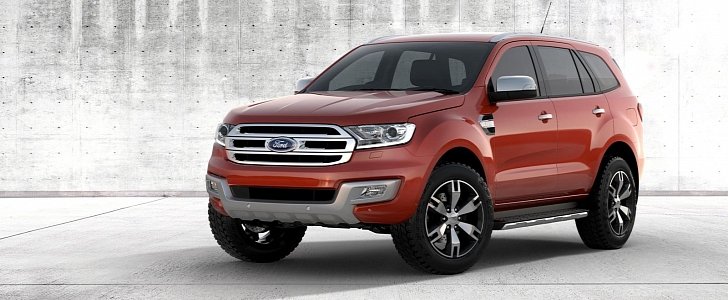Ford has reclassified the four-wheel-drive version of the Everest in Australia from a road-going passenger car to an off-road passenger vehicle.
The change was made after several owners complained to the Blue Oval that the MA (passenger vehicle) classification that was initially made limited the type of modifications that can be legally executed. Customers who wanted to modify their vehicles for serious off-road usage could not change their tires to a suitable specification, and they could not raise the ride height to the desired configuration.
Unfortunately, existing owners of the all-wheel-drive Everest will have to go through the registration process again, if they will want the same reclassification. The process is not that simple, but Ford is reportedly working closely with authorities to solve the issue. Only the all-wheel-drive version can receive the MC (off-road vehicle) classification in Australia.
Ford’s Everest was not the first vehicle with off-road capabilities that was classified as a passenger car, as CarAdvice notes. Other models include the Jeep Grand Cherokee, Renegade, and Cherokee models in their “trail-rated” specifications.
Australia is organized over several states, and each of them has different regulations regarding the changes that are permitted on an off-road vehicle. These include fitting tires that are up to 50 mm (1.9 inches) larger than standard, as well as increasing the ride height with up to 75 millimeters (2.95 inches).
A vehicle that is eligible for an MC classification in Australia requires complying with a minimum ground clearance, along with minimum values of approach angle, break-over angle, departure angle, and running clearance height. Those were easy to pass for a proper off-roader, but most brands went for the road-going classification instead.
Automakers were tempted to homologate an off-road model with a passenger car classification if they offered a rear-wheel-drive version (the same applies to front-wheel drive), which was not compliant with MC norms.
Because of that difference, a vehicle had to get two classifications, and the automaker had to fit the bill for the costs, which are evidently not minute since even corporations as large as car manufacturers try to avoid them.
Unfortunately, existing owners of the all-wheel-drive Everest will have to go through the registration process again, if they will want the same reclassification. The process is not that simple, but Ford is reportedly working closely with authorities to solve the issue. Only the all-wheel-drive version can receive the MC (off-road vehicle) classification in Australia.
Ford’s Everest was not the first vehicle with off-road capabilities that was classified as a passenger car, as CarAdvice notes. Other models include the Jeep Grand Cherokee, Renegade, and Cherokee models in their “trail-rated” specifications.
Australia is organized over several states, and each of them has different regulations regarding the changes that are permitted on an off-road vehicle. These include fitting tires that are up to 50 mm (1.9 inches) larger than standard, as well as increasing the ride height with up to 75 millimeters (2.95 inches).
A vehicle that is eligible for an MC classification in Australia requires complying with a minimum ground clearance, along with minimum values of approach angle, break-over angle, departure angle, and running clearance height. Those were easy to pass for a proper off-roader, but most brands went for the road-going classification instead.
Automakers were tempted to homologate an off-road model with a passenger car classification if they offered a rear-wheel-drive version (the same applies to front-wheel drive), which was not compliant with MC norms.
Because of that difference, a vehicle had to get two classifications, and the automaker had to fit the bill for the costs, which are evidently not minute since even corporations as large as car manufacturers try to avoid them.
















